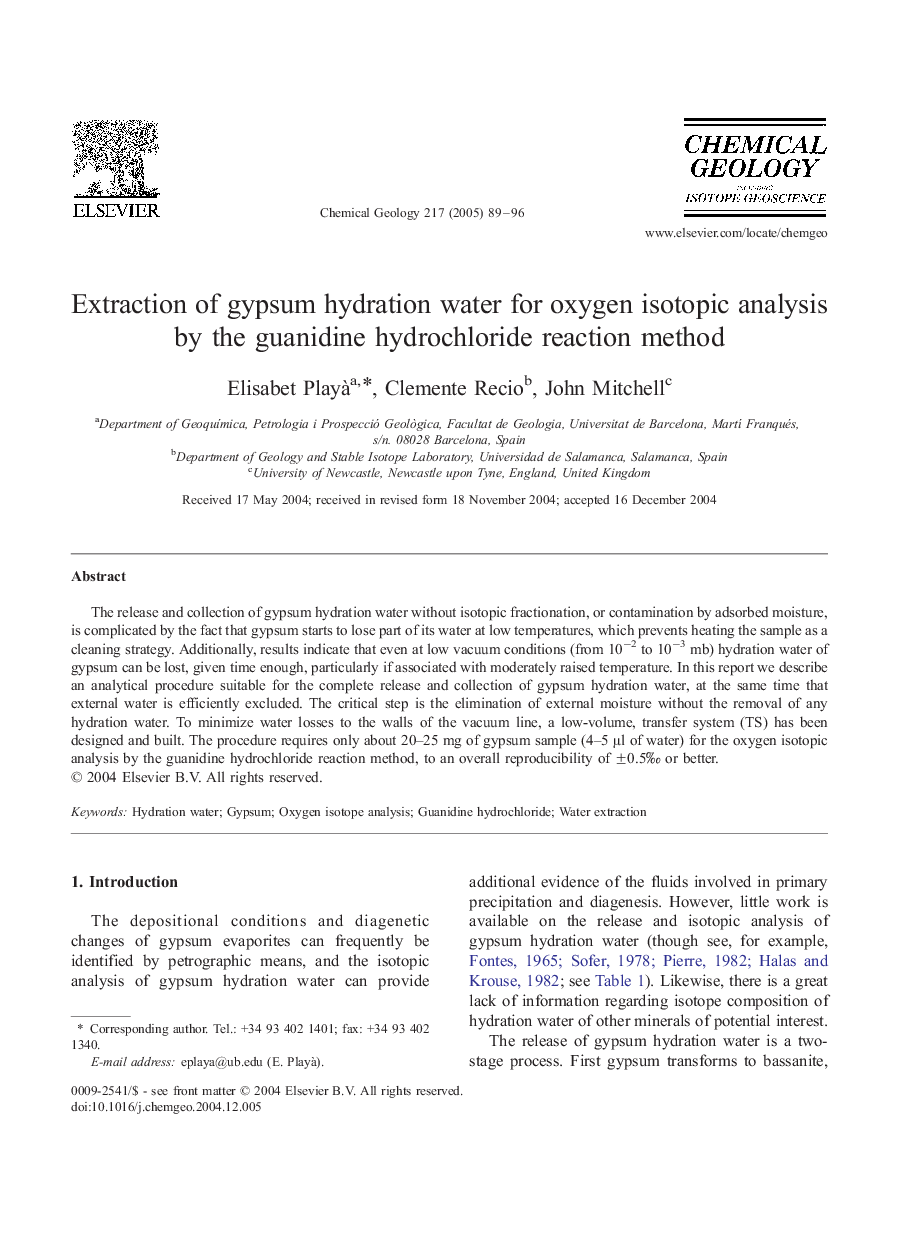| Article ID | Journal | Published Year | Pages | File Type |
|---|---|---|---|---|
| 9529055 | Chemical Geology | 2005 | 8 Pages |
Abstract
The release and collection of gypsum hydration water without isotopic fractionation, or contamination by adsorbed moisture, is complicated by the fact that gypsum starts to lose part of its water at low temperatures, which prevents heating the sample as a cleaning strategy. Additionally, results indicate that even at low vacuum conditions (from 10â2 to 10â3 mb) hydration water of gypsum can be lost, given time enough, particularly if associated with moderately raised temperature. In this report we describe an analytical procedure suitable for the complete release and collection of gypsum hydration water, at the same time that external water is efficiently excluded. The critical step is the elimination of external moisture without the removal of any hydration water. To minimize water losses to the walls of the vacuum line, a low-volume, transfer system (TS) has been designed and built. The procedure requires only about 20-25 mg of gypsum sample (4-5 μl of water) for the oxygen isotopic analysis by the guanidine hydrochloride reaction method, to an overall reproducibility of ±0.5â° or better.
Related Topics
Physical Sciences and Engineering
Earth and Planetary Sciences
Geochemistry and Petrology
Authors
Elisabet Playà , Clemente Recio, John Mitchell,
